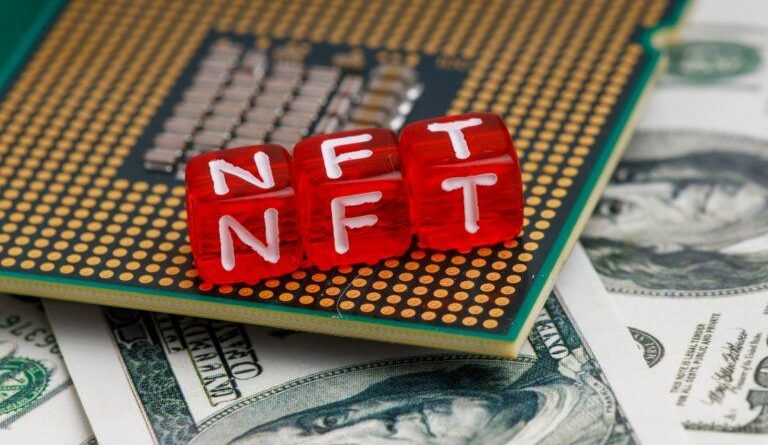NFT Smart Contracts: What They Are and How They Work
NFT smart contracts are digital agreements that use computer code to enable the creation, ownership, and transfer of non-fungible tokens (NFTs) on a blockchain ecosystem.
Without them, NFTs wouldn’t exist. They are the backbone of an industry that’s worth billions of dollars, and they play a fundamental role in keeping the NFT ecosystem secure and transparent.
NFT smart contracts are not so different from regular smart contracts regarding their underlying technology —the difference lies in their functionality. Let’s wind back and have a quick refresher of what smart contracts are, then we’ll see how they apply to NFTs and other industries.
Explaining Smart Contracts & Their Role in Different Industries
Smart contracts are self-executing —they automatically enforce the terms of an agreement between two or more parties. They have become a popular tool for businesses that want to automate complex business processes and transactions, all while eliminating intermediaries and reducing the risk of fraud and errors.
Smart contracts were around since the 90s, a term first coined by Nick Szabo. He wanted to create a decentralised system in which computer programs could execute and enforce the terms of a contract by using cryptography and computer code.
These self-executing contracts came to prominence with the advent of blockchain technology, and are now used in multiple industries, including healthcare, real estate, supply chain, finance, and more. To put this in perspective, blockchain technology and smart contracts can highly benefit the supply chain industry by, for example, automating several processes including invoicing, payments, and tracking. This automates the management burden and increases efficiency.
These and other benefits, such as increased transparency, reduced costs, improved traceability, can be applied to many of the industries listed above.
How Do NFT Smart Contracts Work?
NFT smart contracts use blockchain technology and software code to carry out a specific set of actions. In this case, it can be storing, receiving, and transferring NFT assets. However, some of their most important features are defining the rules and conditions for the creation and transfer of NFTs, such as the specific attributes of the NFT, the ownership rights associated with it, and any royalty or licensing agreements.
Developers can create NFT smart contracts and define the rules for how the NFT can be created, owned, and transferred. These rules are encoded in the smart contract code and are enforced automatically by the blockchain network. Moreover, when a user is minting an NFT, they are actually interacting with the underlying smart contract that defines the properties of the NFT.
There are different types of NFT smart contracts, which we’ll explore in another section. Likewise, when an NFT is minted, an NFT marketplace like OpenSea uses a set of smart contracts to carry out the auction. The Dutch auction, for example, is executed using an ERC-721 NFT smart contract.
NFT Smart Contracts & Royalties
NFT smart contracts play an important role in defining NFT royalties and licensing agreements. The first specifies how the NFT can be used and the latter how royalties —the commission or percentage of revenue that an NFT creator earns each time their NFT artwork is sold in a secondary market— should be distributed.
Also read. Who Invented NFTs? A Brief History Of Non-Fungible Tokens
Through NFT smart contracts, royalties can be automatically distributed to the original creator of an NFT each time it’s sold in the secondary market. The distribution varies but it’s usually 90% of revenue going to the new owner and 10% to the original creator. Likewise, the NFT smart contract will send each party’s respective share to their specific digital wallet, most popularly, MetaMask.
Types of NFT Smart Contract Standards
Ethereum is by far the most popular platform to build and use NFT smart contracts. Two of the most popular types are ERC-721 and ERC-1155. The ERC prefix refers to Ethereum Request for Comment, and it’s a set of technical guidelines developers must follow in order to create a smart contract or cryptocurrency that can run on the Ethereum blockchain.
Let’s take a look at some examples of NFT smart contracts:
- ERC-721: the most popular ERC standard on the Ethereum blockchain for the creation of NFTs. The ERC-721 standard has strict guidelines: mainly, that all tokens must be non-fungible and have their own unique metadata. One feature somewhat criticised by people in the space is that this standard only supports NFT, and each NFT is only transferable in a single transaction —which can cause congestion if network activity reaches high levels.
- ERC-1155: it supports both fungible and non-fungible tokens, and also supports the transfer of multiple batches of NFTs. Additionally, it allows for the conversion of fungible tokens —such as ERC-20— into non-fungible tokens, and vice versa. Due to its versatility, this standard is mostly used by big GameFi projects building on the Ethereum blockchain since there may be multiple copies of the same NFT, but each copy may have unique attribute and ownership rights.
- TRC-721: a non-fungible token standard on the TRON blockchain similar to ERC-721, but specifically for use on the TRON network.
- BEP-721: a non-fungible token standard on the BNB Chain (formerly, Binance Smart Chain) — similar to ERC-721, but for the Binance ecosystem.
- NEP-11: Similar to ERC-721, but made for use on the NEO blockchain.
NFT Smart Contracts and the Metaverse
NFT smart contracts play a key role in the metaverse, in the sense that they’re the backbone for many of the important events taking place in the ecosystem.
NFT smart contracts allow decentralised ownership and transfer of virtual assets and properties. For example, in real estate, virtual plots of lands, buildings, and other assets can be sold as NFTs, therefore the business requires smart contracts to identify the owner of a property or land inside the metaverse and execute certain actions, like transfer of ownership, fractionalise the land, etc.
Further, NFT smart contracts in real estate have the potential to reduce some of the typical bottlenecks and pain points in the industry by automating several processes, potentially minimizing the roles of intermediaries, banks, notaries, and speeding up the transfer process.
Another example is GameFi, or blockchain games; NFT smart contracts are the backbone of many games that offer unique NFT assets, which can be characters, in-game collectibles, property, etc. The NFT smart contract reassures the player that they have full ownership of their assets, and not the gaming publisher or the developers.
Final Thoughts: NFT Smart Contracts and their Future
In this article, we learned what NFT smart contracts are, how they work, and what role they play inside the metaverse.
Beyond PFPs, 3D avatars and artwork, NFT smart contracts and their different standards underpin the digital collectible industry, which comprises thousands of blockchain games, DeFi apps, NFT platforms, and more, which use NFT smart contracts in some way.
Featured image via Unsplash.
Source: Read Full Article


